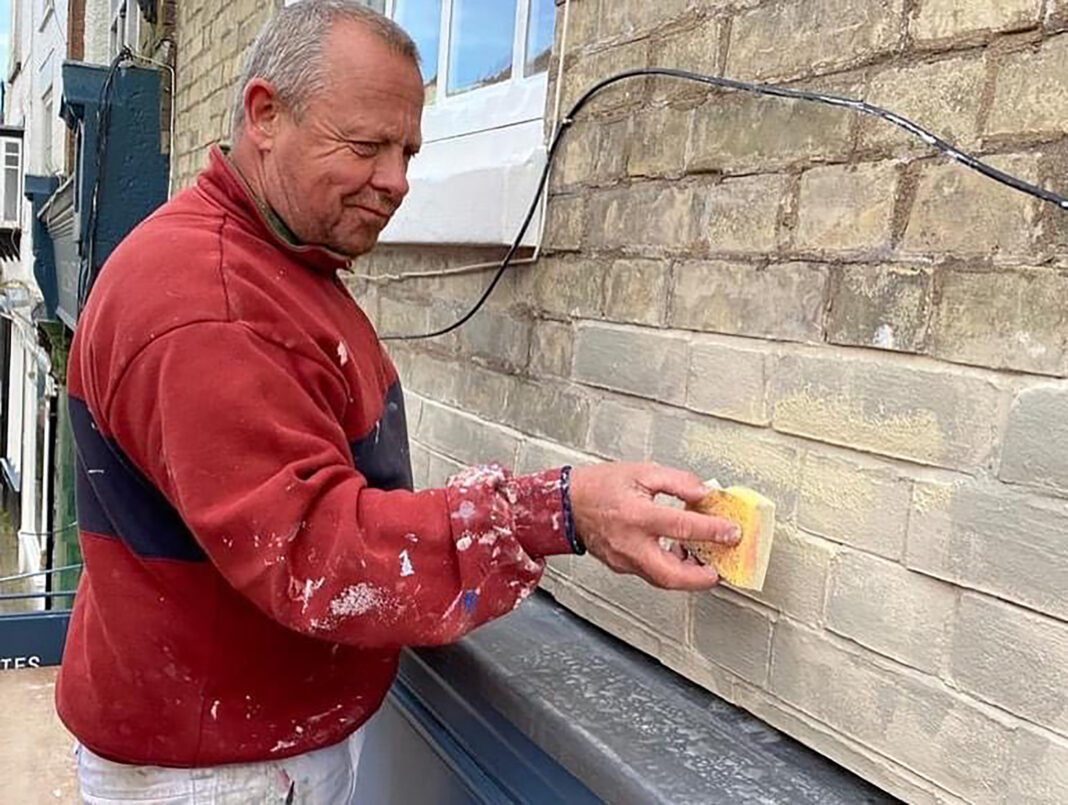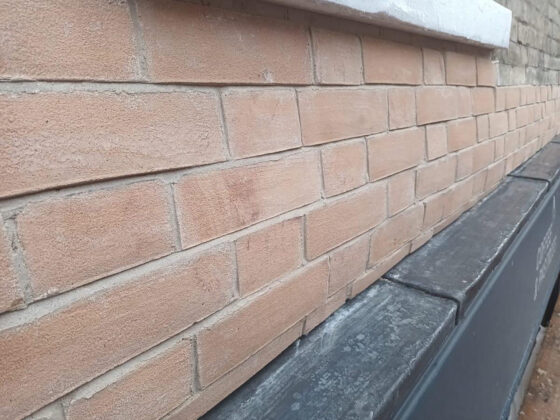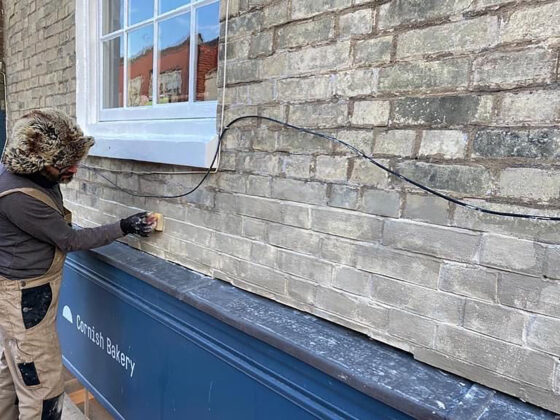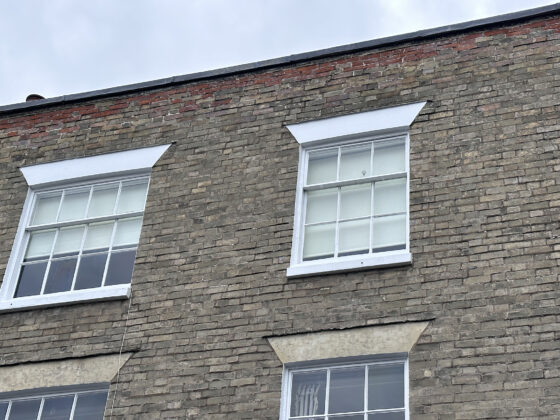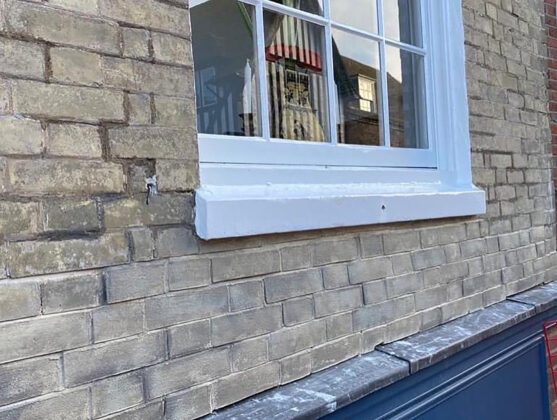A mathematical tile is a clay tile which is the same shape as a brick. In the eighteenth century many home-owners wanted to bring their houses up to date and to do this they wanted to have a brick facade. However to rebuild the front wall would have been expensive so the alternative was to cover the whole of the front face with mathematical tiles which gave the appearance of a brick wall. This was popular in Rye. A 1987 count of surviving mathematical tiles in English counties found the most in Kent – 407 buildings, followed by Sussex 382, Wiltshire 50 and Surrey 47.
Jon Crafer, Company Director of W Tollett explained the trials and tribulations of having to replace these tiles on The Cornish Bakery in the High Street in Rye.

“We started a scheme of repairs above the shop-front following damage to the mathematical tiles by shop-fitters when they had installed the hoarding some twelve months previously. It had been assumed that it was brickwork when the hoarding was fitted. Consequently, when the hoarding was being taken off the tiles came away with it.
“We spent around six months trying to source a mathematical tile closely matching those that had been removed. We searched the length and breadth of England and in Belgium where the tiles originated. We also went to numerous brick and tile manufacturers nationwide to get a clay type that was as close a match as possible.
“Not only was the sourcing of the tiles difficult, we had to contend with rules and regulations when carrying out work on ancient buildings. Some of the solutions were just not going to work because to change the material used would have required special permission so we had to content ourselves in making ‘repairs’.
“You will perhaps note that the tiles to the parapet are orange; these have replaced the original colour at some point in the past, presumably for the reasons given above. On closer inspection of the tiles you will see they are decorated: it was this that made our mind up that we would need to decorate also to ensure that we achieved as close a match as possible.
“With the above in mind we engaged with a local tile manufacturer Aldershaw Handmade Tiles Ltd, commissioning the firm to use the most similar clay they could source and have a quantity hand-made by them with a view that once installed we would then decorate to blend in with those above, the whole done as skillfully and carefully as possible. I trust my experienced decorators to be able to blend the new work into the old so that on completion you won’t be able to see a difference, just like those who decorated the facade before us.
“James and Sam installed the lead canopy over the shop front then pieced in the newly-sourced mathematical tiles to make good: obviously Rye being out of square and out of level this had to be undertaken with great patience to ensure the work looked right when completed. The tiles are fixed mechanically and bedded in conservation lime mortar which was also locally sourced from Chalk Down Lime where we buy all our lime-based traditional building materials.
“Steve and Tim undertook the decorations, spending several days blending and mixing paints and applying the paint with different sponges and brushes to achieve the textures and shading.
“For me it’s another great part of working in our lovely town, dealing with problems, working out solutions all of which are unique and non-standard but of course carrying on from where others have been building for hundreds of years on these fantastic old buildings each with its own story to tell.
“All in all we are very pleased with the work and happy to put it back looking as good as it did before the damage occurred.”
Image Credits: Kt bruce .



